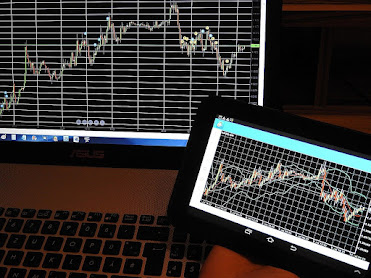What should a forex trading system comprise?
Your trading should be governed by a system of rules to ensure that your participation in the markets is objective and not based on your emotions.
What should a forex trading system comprise?
A complete forex trading system should encompass all eventualities you may be faced with so that nothing needs to be decided during the trade. Therefore, a forex trading system should comprise rules governing:
- What currencies to trade
- Entry point
- Exit point
- Initial stop loss
- Trailing stop loss
- Take profit point
- How many contracts to trade with
Contrary to popular belief, the entry criteria is probably the least most important parameter of a forex trading system. It is the money management component that is the most important aspect of any system.
Any forex trading system should be thoroughly tested using historical price data. There are a number of different software packages available which allow users to program in their particular system and backtest it automatically. This testing can then be used to optimize your trading system's parameters. This process assumes that the markets future behavior will be similar to its past behavior. While this may not necessarily be true as all markets are in a constant state of flux, we believe that changes will occur slowly over time, and by back testing your forex trading system on a regular basis, you will be able to adapt your parameters to the changing market environment.
Trend vs Range Forex Trading Systems
A forex trading system may be developed for either trending or ranging markets. It is not easy to develop a system which works well in both environments.
Markets range more often than they trend. Therefore, a forex trading system optimized for use in a ranging market may seem ideal. However, with range trading your profit is limited to the size of the range, but when trading trending markets your profits are essentially uncapped. Therefore, trend trading is more lucrative although you probably have to endure more losses before you hit a bonanza run.
Which method makes more money - Scalping 10 pips or letting profits ride?
A forex trading system designed to scalp 10 to 20 pips may seem easier than one in which you are aiming to make a profit of around 100 pips or more. However, the spread and the risk-reward ratio are two factors which make scalping much less favorable.
The effect of spread is best demonstrated using an example. If you place an order to buy EUR/USD at 1.3050 (Ask price) with a take profit of 10 pips (i.e. Bid price = 1.3060), the market actually needs to move 15 pips to 1.3060 (Bid)/ 1.3065 (Ask), with a typical spread of 5 pips, before you make 10 pips profit. However, if you have a stop loss of 10 pips (i.e. Bid price = 1.3040), the market only has to move 10 pips to 1.3040 (Bid)/ 1.3045 (Ask) in order to sell you out. Therefore, even though you think your risk/ reward ratio is 1:1, you will generally lose more often than you will gain as the market needs to move only 10 pips against you before you lose your trade while a move of 15 pips in your favor is required before you take profit. This effect of the spread becomes more pronounced when your profit is small, i.e. comparable to the size of the spread.
When you allow your profits to run, risk-reward ratios of 1:2 or better can be achieved and the effect of the spread is not so pronounced.

